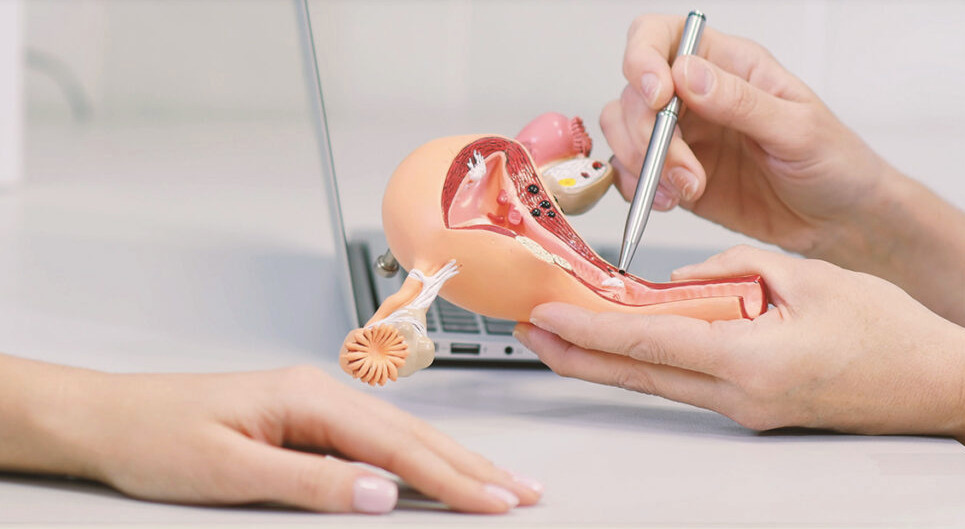Advice from "Zhan Mitrev" Clinic: Myomas in the uterus - symptoms and treatment

Apart from pain, fibroids can cause anemia and contribute to infertility as they make it difficult for the embryo to implant and this is associated with repeated miscarriages.
It is estimated that four out of five women between the ages of 30 and 50 may have uterine fibroids, so-called uterine fibroids. In most cases, these are benign tumors that do not cause symptoms, but more than a third of patients may experience heavy bleeding during menstruation, abdominal pain, discomfort during intercourse, etc.
Uterine fibroids are abnormal masses, tumors that grow in the uterus, and occasionally in the cervix. The uterus is made of muscle and fibroids grow from it. Fibroids can grow from the muscular wall of the uterus, both internally and externally. These growths are usually not cancerous and do not tend to become cancerous. This benign pathology is very common, 80% of women will have fibroids during their lifetime. It is advisable to treat them only when they cause symptoms or make pregnancy difficult. They are usually divided into three categories, according to their location: subserosal, intramural, and submucosal. Approximately 55% of fibroids are subserosal, 40% are intramural, and 5% are submucosal.
The causes of fibroids are unknown, but they are thought to be closely related to female hormones: estrogen and progesterone. At menopause, when these hormones disappear, growth usually stops, and even size may decrease. They usually do not disappear completely.
What types of fibroids are there?
Fibroids can be classified according to their location: In the innermost part of the muscular wall of the uterus, submucous fibroids. In the middle part of the musculature, without protrusion either inside or outside: intramurals. In the most superficial part of the wall pushing out: subserous fibroids.
What are the symptoms?
Symptoms caused by fibroids depend on their location and their size. Some may be microscopic in size or as large as an orange or even larger. However, the largest are usually the ones that produce the most symptoms. Most of these benign tumors are small and cause no symptoms, but sometimes women have very long periods, pain and pressure in the pelvis. The most common symptoms are: abnormal bleeding, heavy periods or bleeding between periods; pelvic and/or lumbar pain; urinary incontinence; sterility, in a low percentage; discomfort during sexual intercourse; constipation due to pressure on the rectum.
How are fibroids treated?
Fibroids are treated only if they cause symptoms. And depending on the age of the woman, her preferences, etc. appropriate treatment will be chosen. There are several types of treatment:
Combined hormonal contraceptives often reduce bleeding.
Gonadotropin-releasing hormone analogues. They are usually only used before surgery to reduce the size of the fibroid.
Progesterone modulators. It is very effective in reducing the size of the fibroid and also the bleeding, but it can cause serious side effects.
Embolization of the arteries going to the fibroid. The goal is to cut off the blood supply to the fibroid by injecting vascular occlusive substances through a catheter.
HIFU. Destroys fibroids using ultrasound. Quick intervention that does not require incisions. It is effective for those intramural fibroids that do not exceed 7-8 cm in size.
Radio frequency. It is performed vaginally, with a thin needle that applies heat inside the fibroid and necrotizes the tissue.
Surgery that preserves the uterus. It consists of removing fibroids using techniques such as laparoscopy, hysteroscopy or laparotomy.
Surgery. A hysterectomy, or complete removal of the uterus, can be done laparoscopically. This surgery is indicated only in women who no longer wish to have children and want to resolve the symptoms of fibroids.
At the "Zhan Mitrev" Clinical Hospital, we have a professional team specialized in the treatment of fibroids and all other gynecological and uro-gynecological problems. Book your appointment on 02 3091 484
Commercial PR text


